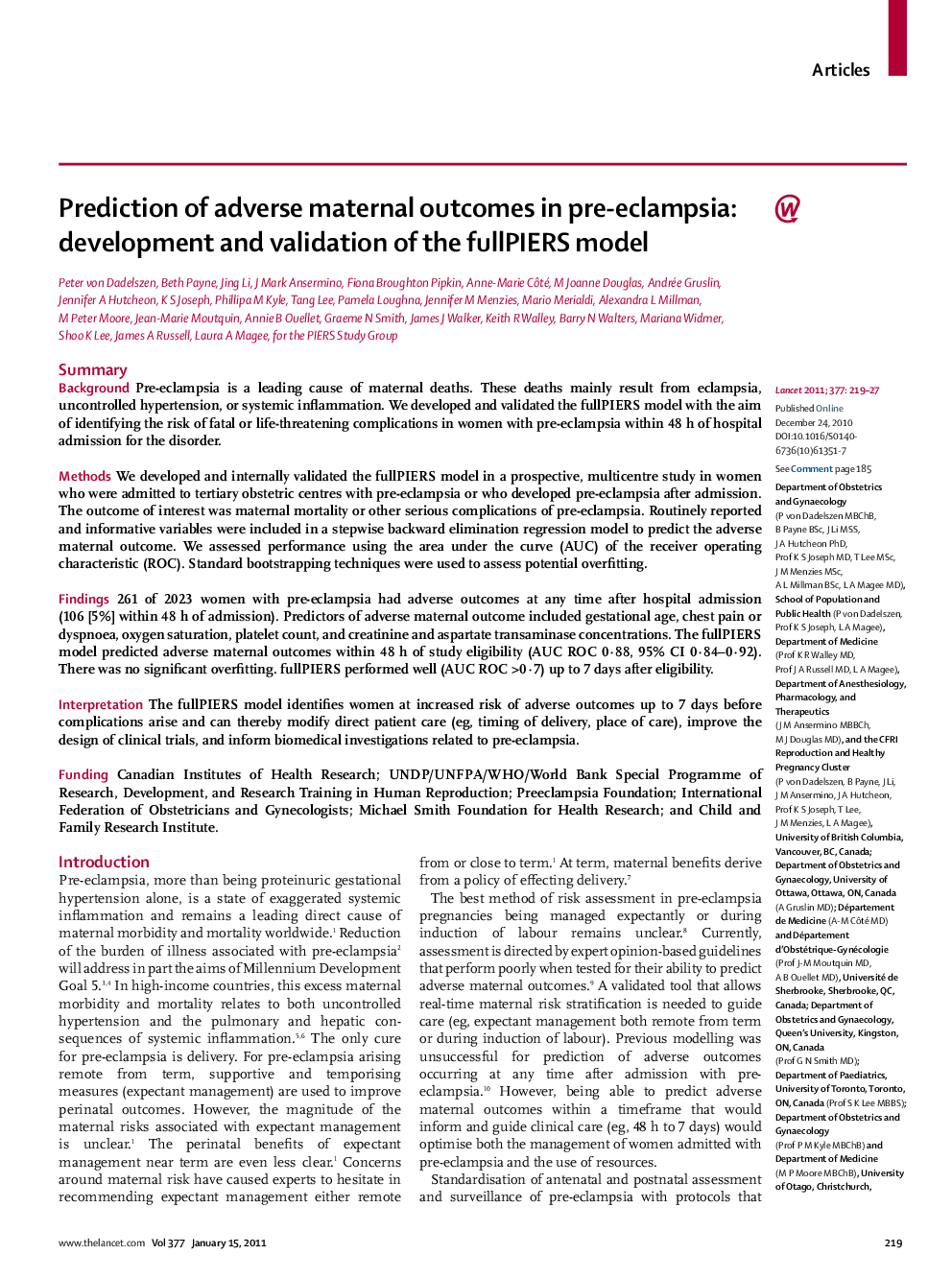| کد مقاله | کد نشریه | سال انتشار | مقاله انگلیسی | نسخه تمام متن |
|---|---|---|---|---|
| 3493590 | 1234248 | 2011 | 9 صفحه PDF | دانلود رایگان |

SummaryBackgroundPre-eclampsia is a leading cause of maternal deaths. These deaths mainly result from eclampsia, uncontrolled hypertension, or systemic inflammation. We developed and validated the fullPIERS model with the aim of identifying the risk of fatal or life-threatening complications in women with pre-eclampsia within 48 h of hospital admission for the disorder.MethodsWe developed and internally validated the fullPIERS model in a prospective, multicentre study in women who were admitted to tertiary obstetric centres with pre-eclampsia or who developed pre-eclampsia after admission. The outcome of interest was maternal mortality or other serious complications of pre-eclampsia. Routinely reported and informative variables were included in a stepwise backward elimination regression model to predict the adverse maternal outcome. We assessed performance using the area under the curve (AUC) of the receiver operating characteristic (ROC). Standard bootstrapping techniques were used to assess potential overfitting.Findings261 of 2023 women with pre-eclampsia had adverse outcomes at any time after hospital admission (106 [5%] within 48 h of admission). Predictors of adverse maternal outcome included gestational age, chest pain or dyspnoea, oxygen saturation, platelet count, and creatinine and aspartate transaminase concentrations. The fullPIERS model predicted adverse maternal outcomes within 48 h of study eligibility (AUC ROC 0·88, 95% CI 0·84–0·92). There was no significant overfitting. fullPIERS performed well (AUC ROC >0·7) up to 7 days after eligibility.InterpretationThe fullPIERS model identifies women at increased risk of adverse outcomes up to 7 days before complications arise and can thereby modify direct patient care (eg, timing of delivery, place of care), improve the design of clinical trials, and inform biomedical investigations related to pre-eclampsia.FundingCanadian Institutes of Health Research; UNDP/UNFPA/WHO/World Bank Special Programme of Research, Development, and Research Training in Human Reproduction; Preeclampsia Foundation; International Federation of Obstetricians and Gynecologists; Michael Smith Foundation for Health Research; and Child and Family Research Institute.
Journal: - Volume 377, Issue 9761, 15–21 January 2011, Pages 219–227